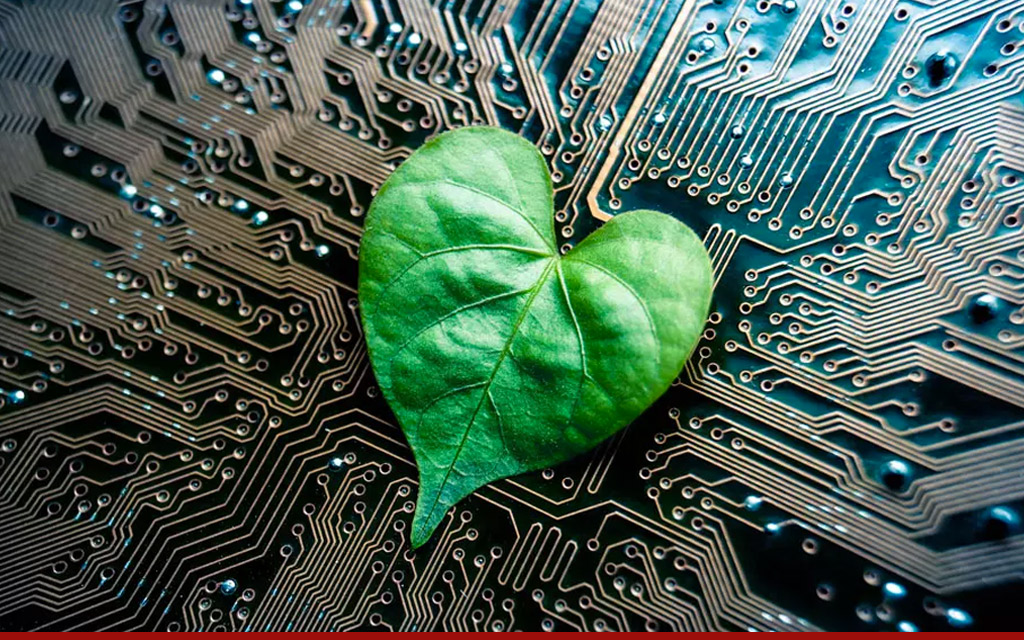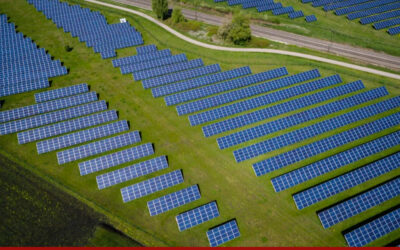Conventional wisdom has it that PCs and electronics are just bad for the environment – think nasty chemicals, extreme water use, and e-waste. Manufacturers are making progress, with more on the horizon.
Conventional wisdom has it that PCs and electronics are just bad for the environment. While silicon makes up most of a computer chip’s wafer, all sorts of funky, toxic elements have been used in traditional PC manufacturing, like cadmium, arsenic, beryllium, boron, and phosphorus. It’s like the periodic table of nasty elements. Some, like arsenic for example, have been phased out of modern PCs, replaced with less toxic substances. Still, despite the fact that computers continue to decrease in size, they require 10 times their weight in chemicals and pollutants during manufacturing.
About 25% of a modern PC is made from plastic. Creating a silicon wafer, the material from which chips are manufactured, is a very water-guzzling process. Water is needed to rinse and clean semiconductor wafers during manufacture. And not just any water. It needs to be ultrapure water (UPW), which is thousands of times purer than drinking water. It takes roughly 1,400 -1,600 gallons of municipal water to make 1,000 gallons of UPW, and fabs use up to 5 million gallons daily.
Toxic paints are often used in the computer chassis finishing process. And anyone who’s un-packaged a new laptop or PC knows that there’s an awful lot of stuff used for sending it around and making the package look cool — paper, styrofoam, and plastics. (Though Apple gets kudos for pioneering all-recyclable packaging, long ago.)
What’s equally as distressing is that, unlike a washing machine for example, which can last 20+ years, a PC is designed to become obsolete. the entire industry has been predicated on the need to have the latest and greatest– there’s always the promise that next year will bring a faster chip, more memory, better graphics, and sound. The numbers vary, but three to four years of ownership is about the average lifespan of a PC, or a smartphone.
All of this makes E-waste the world’s “fastest-growing waste stream”, according to the World Economi Forum . In 2018, an estimated 50 million tons of e-waste was generated. And compounding the e-waste problem is that most of that trash gets shipped to far-off and generally much poorer places where the runoff and toxins then pollutes streams and rivers and local ecosystems.
Cleaning Dirty Laundry
The electronics industry has started trying to own up to its less-than-green practices, however, and yes has made strides in cleaning up everything from its supply chains to its factories and fabs, to the device’s components. But much of this effort goes unnoticed by either consumers or enterprise customers
Take a look at EPEAT, a project of the Global Electronics Council, a nonprofit created by the industry. EPEAT maintains a registry of electronics products and their ratings in much the same way that the LEED ratings are given to green buildings. LEED gets a lot of public attention and marketing; EPEAT not so much.
Looking at the gold-rated products on EPEAT’s list, I found Acer at the top. I spoke with Eric Anderson, Senior Marketing and Brand Manager at Acer about the company’s efforts to go green, both in its internal operations and in its newest green product line, the Vero.
“From the top down and bottom up, our clients have been asking for a focus on green initiatives. Faced with real world challenges, like existing plants and manufacturing facilities, one of the first initiatives Acer concentrated on was creating less waste in its factories, more local supply chain sourcing, and more energy efficient operations,” says Anderson. While none of these efforts are seen by the end user in the final product, the results have been a dramatic refocusing of efforts on sustainable buildings, on optimizing energy consumption and on finding sustainable ways to move products around. The impressive steps Acer is taking internally are documented in this report to European Union regulators and procurement experts. The EU’s own agencies are determined to see action taken as they continue to procure PCs.
The Acer Vero line was built from the get go to be sustainable. There are VERO notebooks, tablets and even projectors. The company reconceived everything:
- recyclable packaging
- cutting back on the ink used in packaging, and making sure it’s non-toxic
- ensuring the machine can be easily upgraded, thanks to a few screws that open the chassis, thus lengthening the product’s life.
- Touchscreens and cooling fans use “Ocean Glass,” which is made from plastic bags and trash fished out of the ocean.
- Scrap materials used in production are all recycled. Thirty percent of the keycaps and chassis are made from recycled plastics.
- The chassis is paint free
Other elements of the VERO line are more cosmetic and reinforce green behavior. Using mica in the chassis gives it a “sustainable look”. Acer has even gone so far as to style the “R” and “E” keys to enforce the message “Reduce, Reuse, and Recycle.” And of course, the machines are available only in “natural colors.”
Michelle Chuaprasert, Senior Director of Innovation and Sustainability at Intel, believes that while green solutions are very much in progress, they may not be touted as much as they should be. An engineer by training, she has been putting great emphasis on both greening production and working with partners to create greener product designs. “One of our goals was to tackle water management, “ she says. “The goal is to be water positive in terms of reuse and recycling by 2030.” She reports that Intel is 99 percent of the way there. Over 80 percent of the energy used in its plants comes from renewables including solar and wind. New production facilities are LEED certified.On the product side, Intel is looking for a 10X increase in energy efficiency (measured in the performance per watt of its chips) by the end of the decade. The company has even designed its own NUC PC using recycled packaging and plastics, aiming to keep materials out of landfills.
“When we work with our OEMs our teams co-engineer to look at where we can meet sustainability targets without sacrificing performance,” says Chuaprasert. “We have the biggest impact on the motherboard itself by choosing the greenest components with the highest energy efficiency.” In the future, she says, Intel will be looking at bio-based materials.
So here’s the thing. These are two examples of companies that deserve an “A” for effort, but the PC industry is not even close to mitigating the damage that’s been done to the environment through usage of its technology.
So how do we step up the pace? Some of that falls on consumers, too. We need to amplify best practices like these, so that we all can model green behavior. Governments, educators, and other larger purchasers of PCs should insist that manufacturers meet the EPEAT Gold standard. And the industry needs to educate us better about the steps it is taking down the green path.
Source: https://techonomy.com/green-pcs-get-an-a-for-effort/




